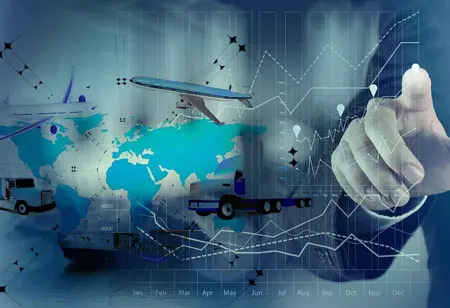THANK YOU FOR SUBSCRIBING
THANK YOU FOR SUBSCRIBING

By
Logistics Transportation Review | Friday, May 26, 2023
Stay ahead of the industry with exclusive feature stories on the top companies, expert insights and the latest news delivered straight to your inbox. Subscribe today.
The technological advancements ensure the preservation of quality and safety and also contribute to reducing waste, improving customer satisfaction, and driving overall sustainability in the food supply chain.
FREMONT, CA: In recent years, there has been a significant rise in demand for fresh and frozen food deliveries due to changing consumer preferences and the growth of e-commerce. The logistics sector has seen the introduction of cutting-edge cold chain solutions to satisfy these changing demands. To guarantee the secure delivery and transportation of perishable commodities, these creative techniques combine technology, automation, and environmentally friendly practices.
1. Temperature-Controlled Packaging:
One of the critical challenges in cold chain logistics is maintaining the desired temperature throughout the delivery process. Traditional packaging methods often fall short in this aspect. However, new-age solutions involve the use of advanced temperature-controlled packaging. These packages are designed with insulation and cooling elements that can regulate the internal temperature, ensuring the freshness and quality of the products during transportation.
2. IoT and Sensor Technology:
The Internet of Things (IoT) and sensor technology have transformed various industries, and cold chain logistics is no exception. IoT-enabled sensors are now being used to monitor and track the temperature, humidity, and location of goods in real-time. These sensors transmit data to a central system, allowing logistics providers to proactively address any deviations from the optimal conditions. Alerts can be generated, and corrective actions can be taken swiftly to prevent spoilage or quality deterioration.
3. Cold Storage Warehouses:
State-of-the-art cold storage warehouses have become an integral part of the modern cold chain logistics network. These facilities are equipped with advanced temperature control systems, including blast freezers, chillers, and multi-temperature zones, ensuring the products are stored at the ideal conditions. Automated storage and retrieval systems (AS/RS) and robotics are also employed to improve efficiency and reduce manual handling, minimizing the risk of human errors.
4. Last-Mile Delivery Innovations:
The last-mile delivery, which involves transporting goods from a distribution centre to the final destination, is a critical stage in cold chain logistics. New-age solutions aim to optimize last-mile operations to maintain the integrity of fresh and frozen food. This includes the use of electric vehicles (EVs) and refrigerated trucks powered by renewable energy sources. Additionally, route optimization algorithms are employed to minimize delivery time and ensure timely arrivals.
5. Blockchain Technology:
Blockchain technology is gaining traction in the logistics industry, providing enhanced traceability and transparency. In the context of cold chain logistics, blockchain can offer a tamper-proof and immutable record of the entire supply chain journey, including temperature records, handling procedures, and certifications. This enables stakeholders to verify the authenticity and quality of the delivered goods, building trust among consumers and reducing the chances of fraud or mishandling.
6. Sustainable Practices:
As environmental concerns continue to grow, cold chain logistics providers are increasingly adopting sustainable practices. This includes investing in energy-efficient infrastructure, utilising eco-friendly packaging materials, and implementing optimized transportation routes to reduce carbon emissions. Some companies are even exploring alternative refrigeration technologies, such as using natural refrigerants with lower global warming potential.
Fresh and frozen food delivery and transportation have been completely transformed by the development of modern cold chain logistics technologies. These developments guarantee the secure and effective management of perishable items by integrating technology, automation, and ecological practices. Logistics operators must adopt these cutting-edge technologies to keep up with the increased demand for fresh and frozen food deliveries while preserving product quality and minimising environmental effects. Consumer expectations are always changing.
I agree We use cookies on this website to enhance your user experience. By clicking any link on this page you are giving your consent for us to set cookies. More info





